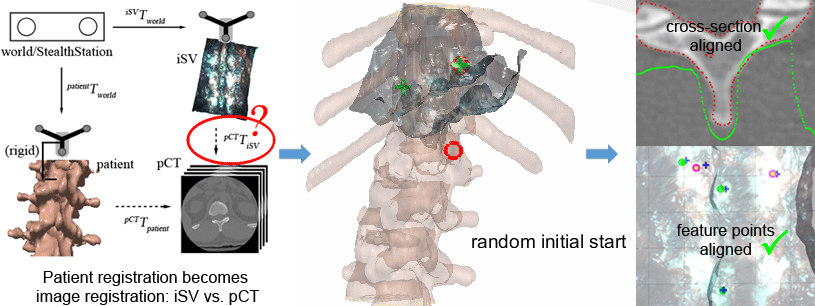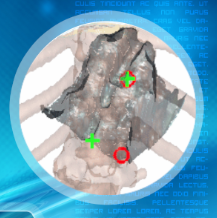
Effective image-guidance relies on an accurate and efficient patient registration. To-date, image-guidance has limited applications in spinal surgery, in large part, due to challenges in patient registration. For example, the mobility of spinal vertebrae makes conventional fiducial registration infeasible. While intraoperative CT and fluoroscopy offer navigation directly, their radiation concerns and capital costs are practical barriers for wide deployment. In this work, we establish a patient registration framework using radiation-free, low-cost stereovision and demonstrate its clinical feasibility for patients undergoing open spinal fusion surgery. Three-dimensional geometry of the exposed vertebral surface was reconstructed from a typical stereovision image pair sampling 2–3 vertebrae. A classical multi-start approach was used to register the surface with that generated from pre-operative CT. Some semi-automatic interventions were used to facilitate the registration, including bone surface segmentation and placement of two pairs of homologous feature points on the surfaces. The technique was evaluated in eight clinical patient cases. The resulting registration achieved sufficient accuracy (1.43 mm in terms of average distance between the two vertebral surfaces) and efficiency (~1.5 min). For every case, the registration accuracy was found to be improved over that obtained from anatomical landmarks. The capture ranges of the image registration were 23.8 mm in translation and 46.0 deg in rotation, suggesting sufficient robustness. These findings support the clinical feasibility of stereovision for patient registration in open spinal surgery, and therefore, its potential to increase the adoption of image-guidance in this surgical specialty.

